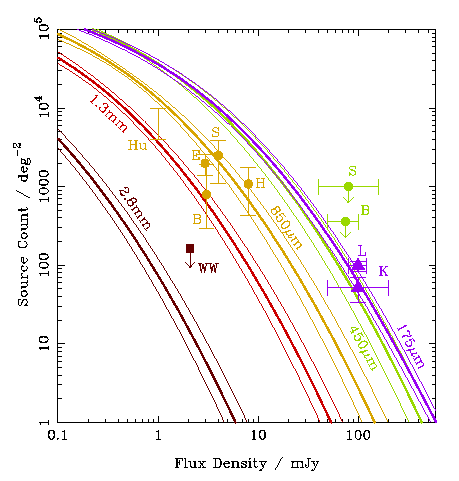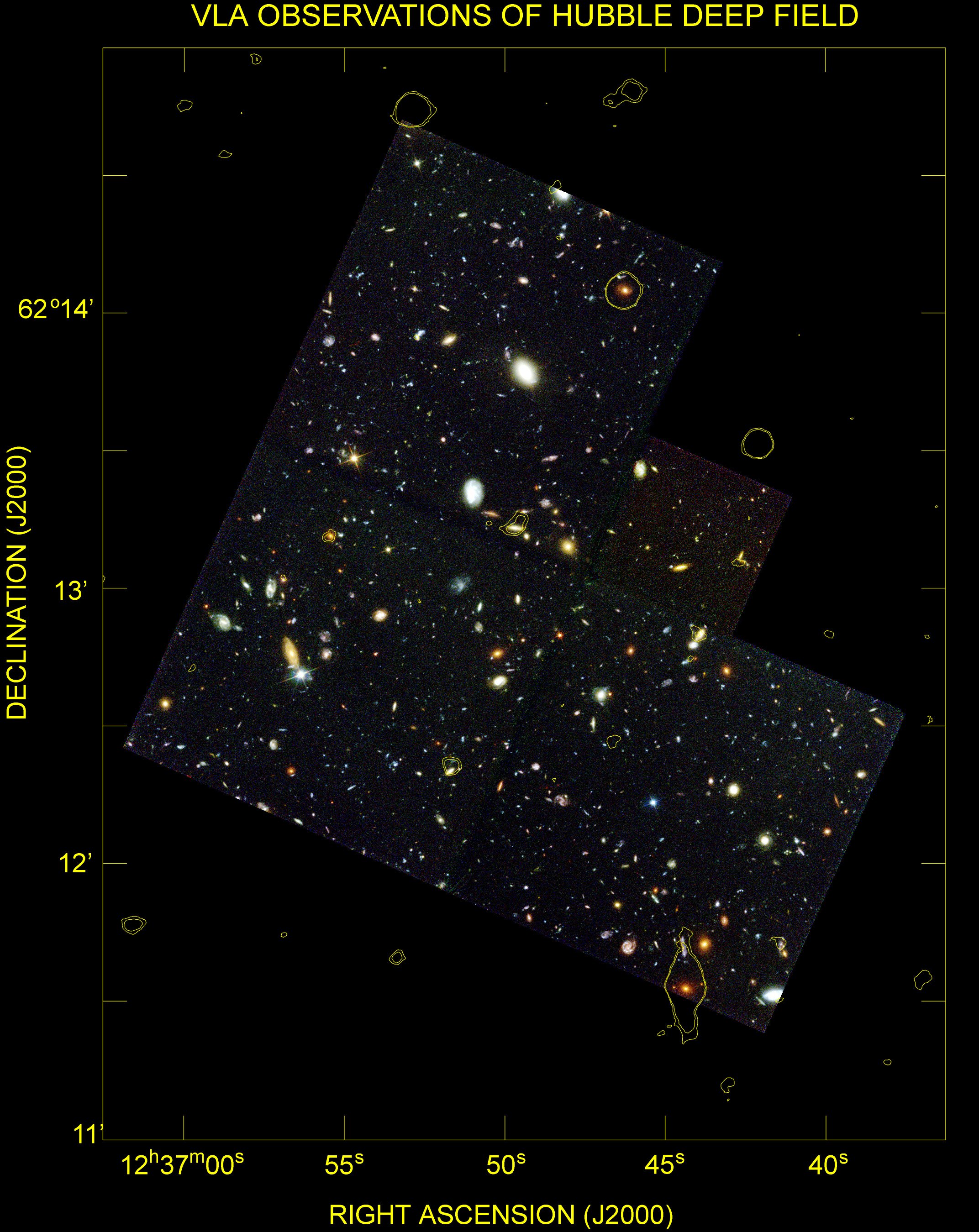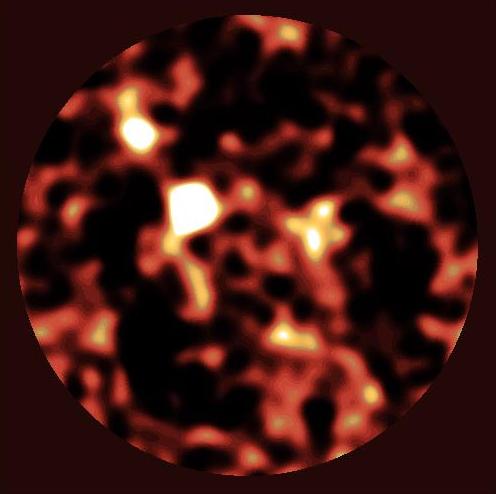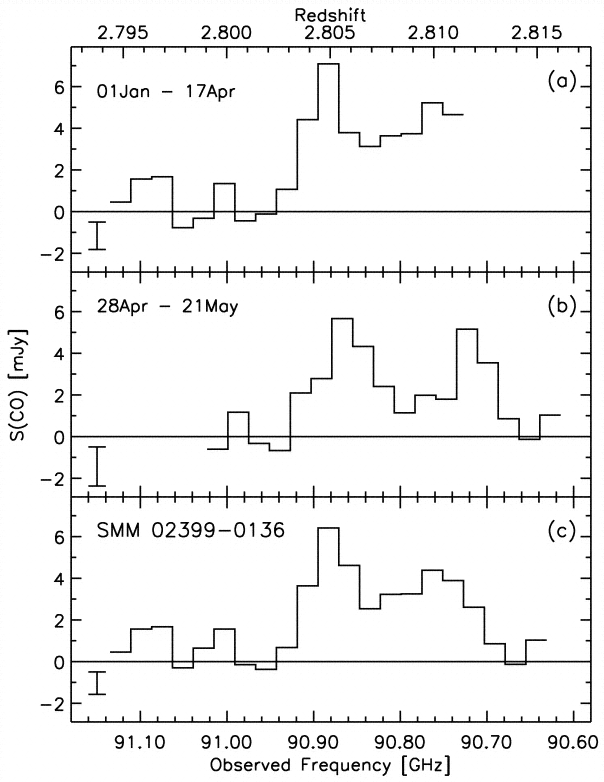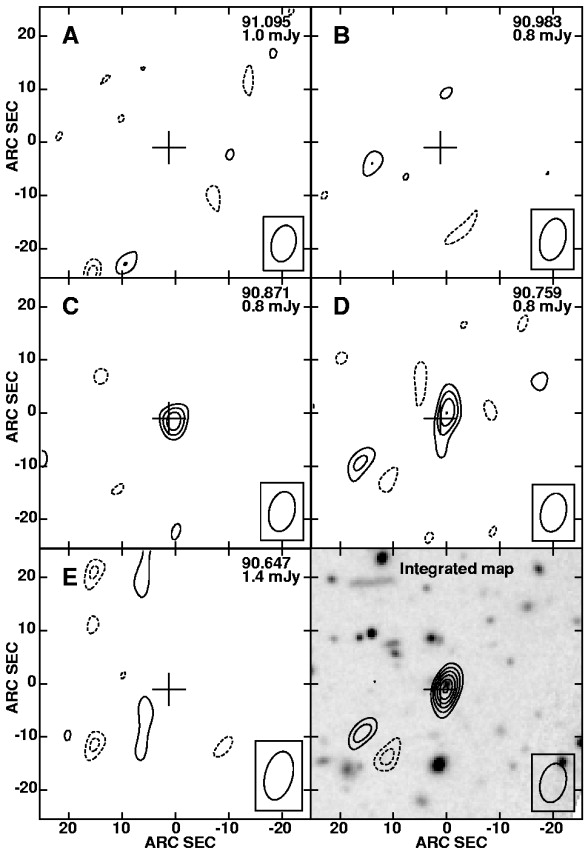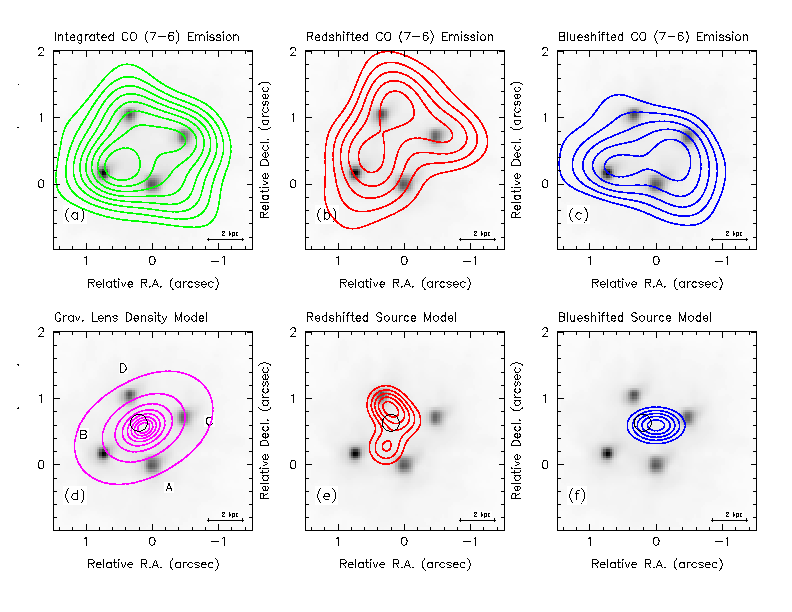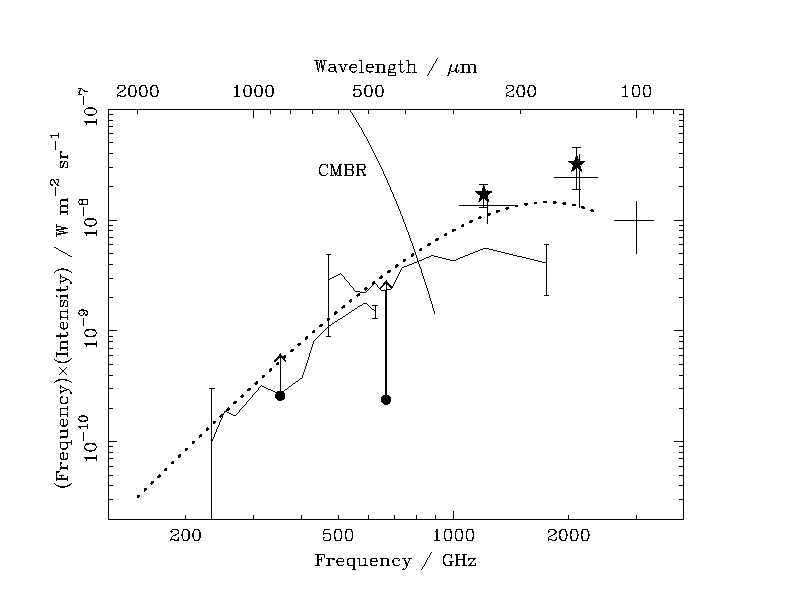
|
The intensity of cosmic background radiation in the millimeter,
submillimeter, and FIR wavebands, as inferred by Puget et al. (1996;
thin solid lines), Fixen et al. (1998; dotted lines), and Schlegel et al.
(stars) -- from Blain et al. (1998).
The discrete sources detected by SCUBA and the inferred
background intensity from the models (see above) can account for
the entire submm cosmic background (in excess over the CMBR).
|
